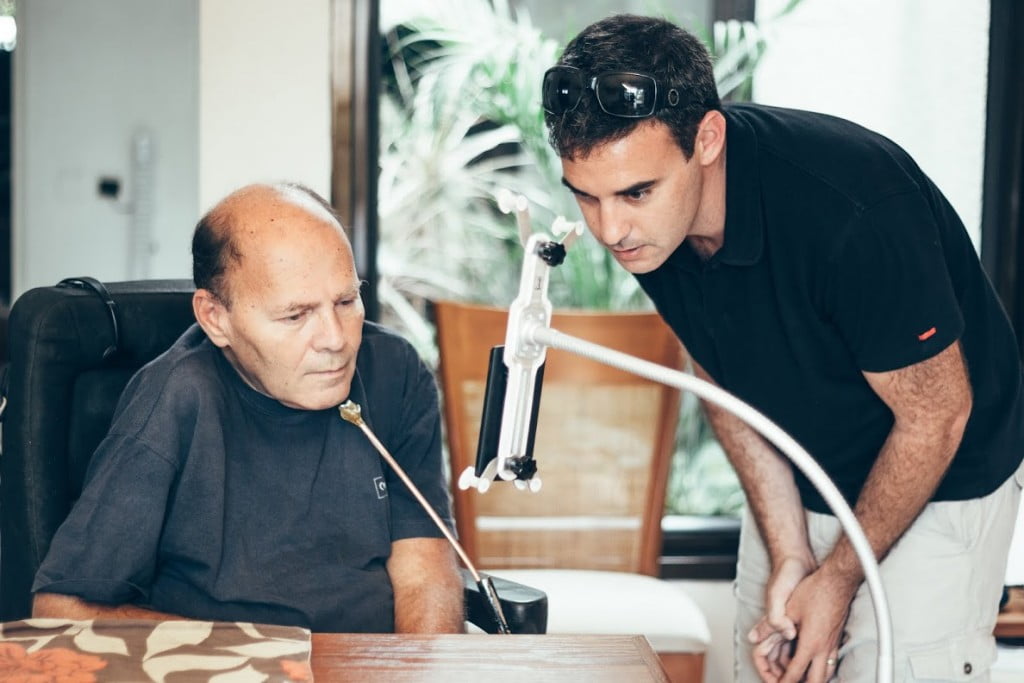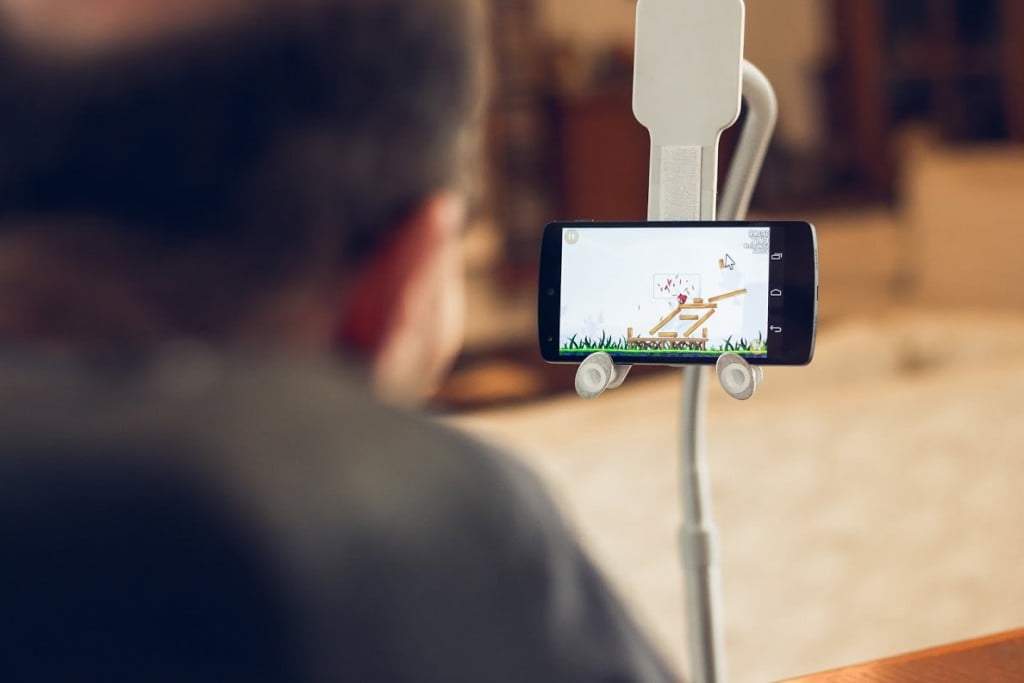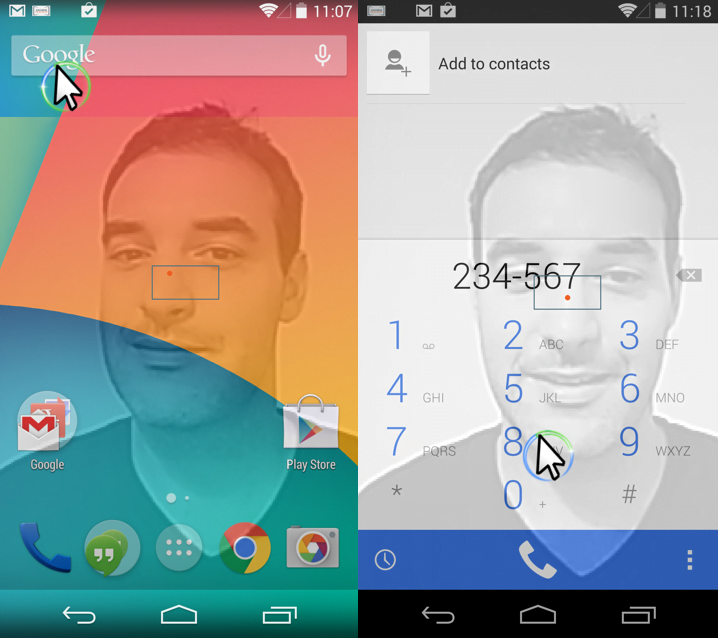Sesame Enable’s touch-free smart phone, the first of its kind, will allow users to control their phone without ever lifting a finger. Imagine making a call, taking a picture, or even playing a game with just the nod of your head. Designed exclusively for the mobility impaired, the Sesame phone was developed by techy entrepreneur Oded Ben Dov and former electrical engineer Giora Livne, who became a quadriplegic following a serious accident nine years ago. Frustrated by his inability to order his wife flowers or make private phone calls, among other things, Livne needed to find a way to re-connect with our constantly connected world.
Apparently, he wasn’t the only disabled person feeling cut-off from a world of smartphone data. Inspired by Livne’s predicament, Ben Dov set out to create a device that could serve the millions of people with disabilities worldwide. Three years and one crowdfunding campaign later, the Sesame Enable team plans to release its first batch of touch-free devices to beta users in March, giving people with motor disabilities long-desired access to the ultimate tool of the information age – the smartphone.
Just say ‘Open Sesame’
When users receive their Sesame phone next month, it will be ready to use right out of the box. To help make the transition to using a smartphone as easy as possible, no installation is required; all users have to do is say “Open Sesame” and their phone will turn on and begin working. The front-facing camera on the phone uses computer vision technology to capture key points on the user’s face, activating a cursor that allows the user to navigate the functions on their phone with a nod of the head. This application of computer vision technology to existing smartphone technology allows users make calls play games, use apps, send texts and browse the web without ever touching a screen.
SEE ALSO: Israeli Startup Enables Touch-Free Control Of Smart Devices For The Disabled
As seemless as it may sound, the software and design for the Sesame phone took some time to hash out. Ben Dov and his team researched and worked with people with different motor disabilities, individuals they were able to gain access to by participating in the world’s first start up accelerator for special needs, A3I (Accelerating Inclusion in Israel). According to Ben Dov, this opportunity was key in making Sesame Enable’s technology as accessible as possible, “The more you meet with different people you realize that there are a lot of different movements, postures, and positions unique to each person. Every time we met with someone new, we faced new challenges. We wanted to make sure to create a system that would be optimal for everyone,” he tells NoCamels.
The only real touch-free smartphone solution
So far the Sesame phone is the only touch-free smartphone solution on the market. Other companies have tried creating similar solutions using laptops or tablets, but the products are limited. One such company is Tobii, a Swedish technology company, that designed touch-free software for the operation of Windows tablets, however many basic smartphone features, like sending text messages or making calls, are missing. Additionally, this and other touch-free software for the disabled can be expensive, costing up to $2,000.
Sign up for our free weekly newsletter
SubscribeBen Dov hopes to make things a little easier on the user by embedding Sesame Enable’s technology into available smartphone models, and by charging a more competitive price of $900, which is still more expensive than the average standard smartphone’s price tag of $200. In a way Sesame phones are really customized versions of Google Nexus phones, but since Sesame’s solution is software-based, in the future the company hopes to make other models, like Apple’s iPhone, accessible to touch-free users.
Now that the challenge of creating the world’s first touch-free smartphone is out of the way, Ben Dov is concerned with reaching the millions of disabled individuals who could benefit from Sesame Enable’s technology. And according to Ben Dov, this can be achieved by partnering with a major mobile operator, “Right now I am super thrilled when I hear that just one person has bought this phone. To think about how it can scale nation-wide is just crazy,” says Ben Dov, continuing, “As soon as the company finds a partner who is interested in the product, it will be easier for us to adapt our code to work on any phone.”
SEE ALSO: EyeMusic: New App Enables The Blind To ‘Hear’ Images
While Sesame’s current focus is on people with motor disabilities, the company is already thinking up ways to make their touch-free technology available to people with debilitating injuries as well as to the general public that could always use an ease-of-access upgrade. For Ben Dov, the possibilities are endless, “In an industry that is often misconceived as being too small or esoteric to build a business on, this may be the technology that shifts our attention. Many times technologies for special needs can overflow into mass use.”
Paying it forward
Sesame Enable gained some attention during its Indiegogo crowdfunding campaign last year in which the company raised $38,000, or 115 percent of its initial funding goal. As part of the campaign, crowdfunders could nominate individuals and organizations that they believed could benefit from the technology, with Sesame donating their phone to the contestants with the most votes. The company has also received investments of $350,000 from the Office of the Chief Scientist in Israel together with a private angel investor. Recently, Sesame got more good news when they were awarded the title of the best educational startup in Verizon Wireless’s ‘Powerful Answers’ competition, taking home $1 million in prize money to donate Sesame phones to those who need them most.
Overall, Ben Dov is positive about what the future for his young company holds, “I think the story behind this technology is good,” he says. “The technology meets people with needs. We don’t think about it daily, but these people don’t have access to a very crucial piece of technology that we use every day, and now they will.”
Photos: Batsi Hansen
Related posts

Editors’ & Readers’ Choice: 10 Favorite NoCamels Articles

Forward Facing: What Does The Future Hold For Israeli High-Tech?

Impact Innovation: Israeli Startups That Could Shape Our Future






Facebook comments